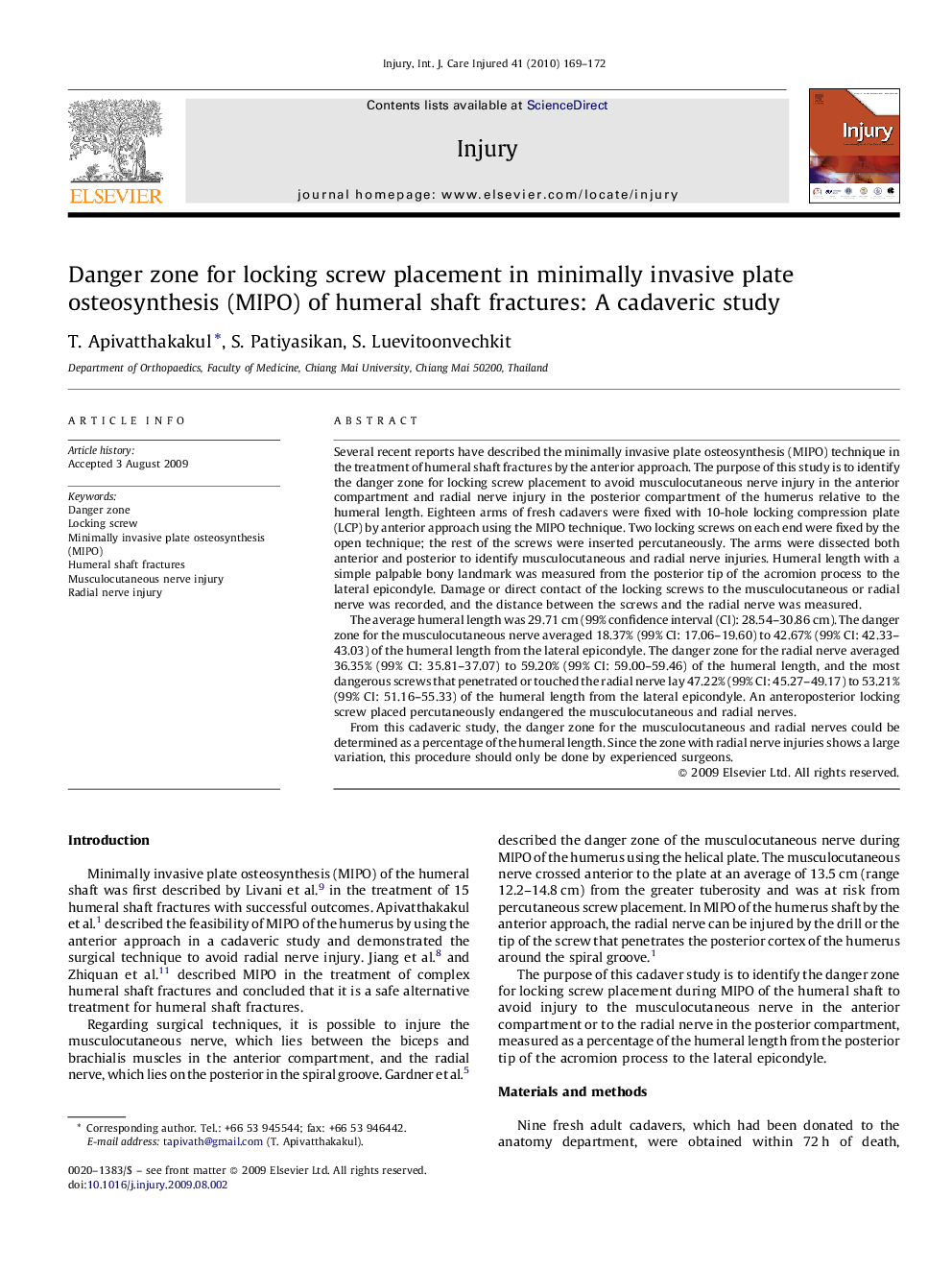| Article ID | Journal | Published Year | Pages | File Type |
|---|---|---|---|---|
| 3241990 | Injury | 2010 | 4 Pages |
Several recent reports have described the minimally invasive plate osteosynthesis (MIPO) technique in the treatment of humeral shaft fractures by the anterior approach. The purpose of this study is to identify the danger zone for locking screw placement to avoid musculocutaneous nerve injury in the anterior compartment and radial nerve injury in the posterior compartment of the humerus relative to the humeral length. Eighteen arms of fresh cadavers were fixed with 10-hole locking compression plate (LCP) by anterior approach using the MIPO technique. Two locking screws on each end were fixed by the open technique; the rest of the screws were inserted percutaneously. The arms were dissected both anterior and posterior to identify musculocutaneous and radial nerve injuries. Humeral length with a simple palpable bony landmark was measured from the posterior tip of the acromion process to the lateral epicondyle. Damage or direct contact of the locking screws to the musculocutaneous or radial nerve was recorded, and the distance between the screws and the radial nerve was measured.The average humeral length was 29.71 cm (99% confidence interval (CI): 28.54–30.86 cm). The danger zone for the musculocutaneous nerve averaged 18.37% (99% CI: 17.06–19.60) to 42.67% (99% CI: 42.33–43.03) of the humeral length from the lateral epic
